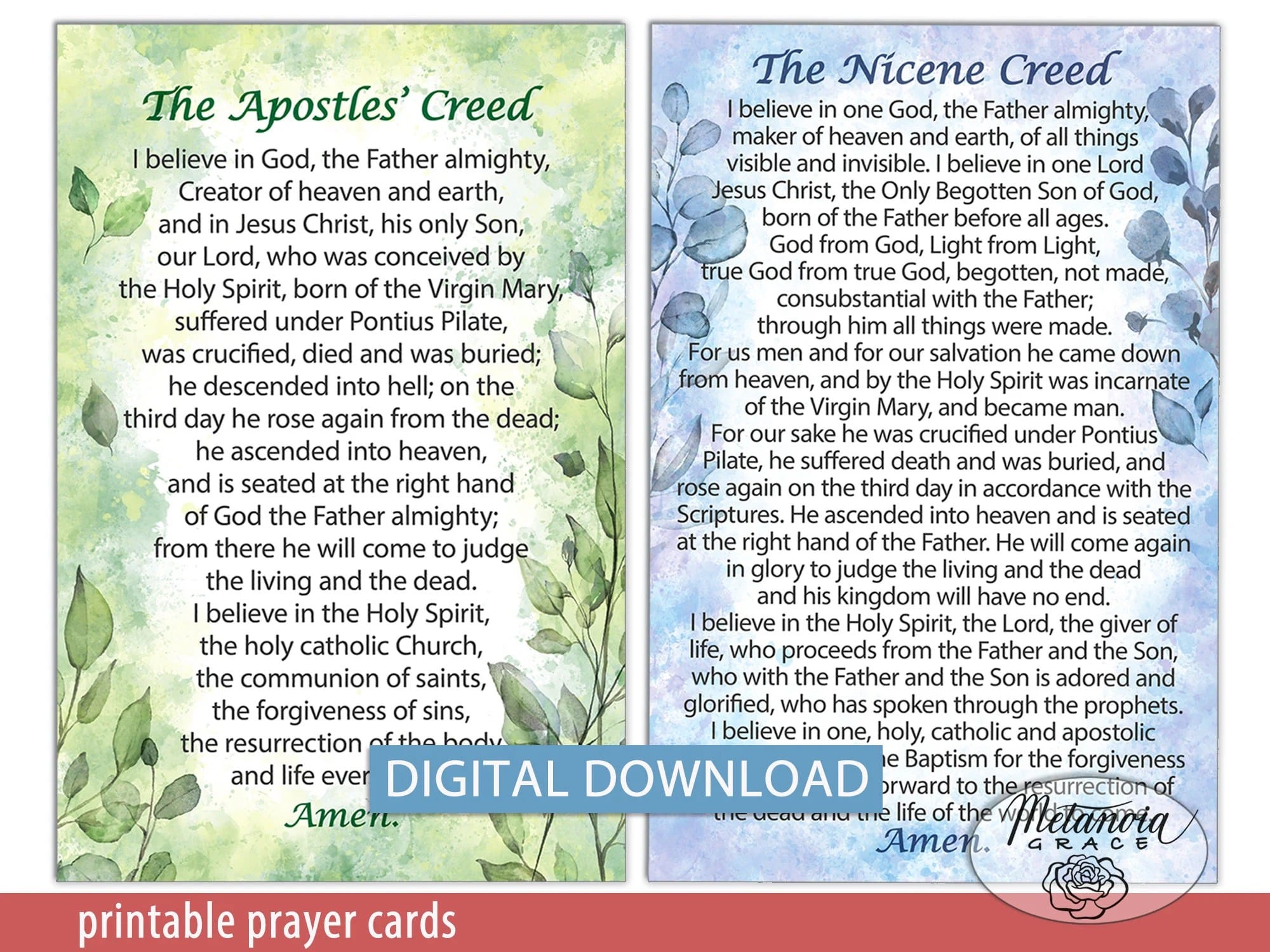This guide explores the Apostles’ Creed in Spanish, El Credo de los Apóstoles, providing a comprehensive understanding of its meaning, history, and significance within Spanish-speaking Christian communities. We’ll delve into its core tenets, explore its evolution, and provide resources for learning and praying the Creed in Spanish.
Understanding the Apostles’ Creed
The Apostles’ Creed, or Symbolum Apostolorum in Latin, is a concise summary of core Christian doctrines. While not directly written by the apostles, it reflects the foundational teachings of the early Church, likely developing gradually between the 2nd and 9th centuries. It serves as a cornerstone of Christian belief, affirming faith in the Trinity, Jesus Christ’s incarnation, death, and resurrection, and the Holy Spirit. Recited in numerous Christian traditions, the Creed acts as both a personal affirmation of faith and a unifying statement of shared belief. Understanding the Apostles’ Creed unlocks key theological concepts and provides a framework for exploring the rich history and diverse expressions of the Christian faith. To learn about seemingly unrelated topics, you can explore resources on the alive andes survivors book or the Babe Ruth nicknames.
Key Points of the Creed
- Foundation: Belief in God as the all-powerful Creator of the universe.
- Christology: Jesus is God’s son and Lord, conceived by the Holy Spirit and born of Mary.
- Suffering and Resurrection: Jesus suffered under Pilate, was crucified, died, and was resurrected on the third day.
- Ascension and Authority: Jesus ascended to heaven and sits at God’s right hand.
- Holy Spirit: Belief in the Holy Spirit, the active force of God.
- Catholic Church: Declaration of belief in the holy catholic Church (depending on interpretation, this can refer to the universal Christian Church or specifically the Roman Catholic Church).
- Fellowship of Saints: Connection and shared faith among believers, both living and deceased.
- Forgiveness of Sins: God forgives sins through faith in Jesus.
- Resurrection and Eternal Life: Belief in the resurrection of the body and eternal life for believers.
The Creed in Spanish (El Credo)
“`
Credo en Dios, Padre todopoderoso,
Creador del cielo y de la tierra.
Creo en Jesucristo, su único Hijo, nuestro Señor,
que fue concebido por obra y gracia del Espíritu Santo,
nació de Santa María Virgen,
padeció bajo el poder de Poncio Pilato,
fue crucificado, muerto y sepultado,
descendió a los infiernos,
al tercer día resucitó de entre los muertos,
subió al cielo
y está sentado a la derecha de Dios Padre todopoderoso.
Creo en el Espíritu Santo,
la santa Iglesia católica,
la comunión de los santos,
el perdón de los pecados,
la resurrección de la carne
y la vida eterna.
“`
Line-by-Line Explanation
Each line of the Creed is rich with theological meaning. For example, “Credo en Dios, Padre todopoderoso, Creador del cielo y de la tierra” establishes God as the ultimate source of all creation. The lines detailing Jesus’s life affirm his dual nature – fully God and fully human. His suffering, death, and resurrection are central to the Christian narrative of salvation. The Creed’s affirmation of the Holy Spirit highlights the ongoing presence and power of God in the world and in believers’ lives. The mention of the “santa Iglesia católica” can be interpreted in various ways, depending on the denomination, referring either to the universal Church or the Roman Catholic Church specifically. Finally, the Creed culminates in the hope of forgiveness, resurrection, and eternal life.
Exploring the Creed’s Significance
The Apostles’ Creed is more than just a historical document; it’s a living part of faith for many Christians, particularly within Spanish-speaking communities. It’s a shared language of belief, connecting millions across generations and geographical boundaries. Its usage includes:
- In Church Services: The Creed is frequently recited during Mass or other services.
- Personal Prayers: It serves as a basis for personal prayer and reflection.
- Teaching the Faith: It’s an invaluable tool for teaching core Christian beliefs, especially to new members or children.
- Cultural Significance: Reciting the Creed in Spanish connects individuals to a rich, shared tradition within their culture.
Praying the Creed in Spanish
Learning to pray the Apostles’ Creed in Spanish allows for a deeper connection with the global Christian community. It’s a way to experience the prayer in a language spoken by millions, enriching one’s spiritual journey.
Resources for Learning
Numerous resources are available to aid in learning the Creed in Spanish:
- Audio and Video Recordings: Online platforms like YouTube offer audio and video recordings of native Spanish speakers reciting the Creed, which can assist with pronunciation and comprehension.
- Text and Translations: Websites such as Catholic Online and Siempre Spanish provide the Creed’s text in Spanish alongside English translations. These resources can be invaluable for understanding the meaning of each phrase.
- Interactive Tools: Some platforms offer interactive elements like quizzes and downloadable resources, enhancing the learning experience.
Tips for Praying
- Focus on Understanding: Don’t just memorize the words; delve into the meaning of each phrase to deepen your understanding and connection with the prayer.
- Practice Regularly: Consistent recitation will improve your fluency and familiarity with the Creed.
- Use Multiple Resources: Combine audio, video, and textual resources for a multi-sensory learning experience.
- Connect with Community: If possible, pray the Creed with others in a Spanish-speaking Christian community to enhance your understanding and experience the shared nature of the prayer.
Ongoing Scholarship and Diverse Interpretations
It’s important to acknowledge that scholarly research on the Creed’s origins and interpretations is ongoing. While some scholars suggest it evolved from early baptismal practices, others propose different theories. Some experts believe the current form may not have been directly written by the apostles themselves. This ongoing research suggests that our understanding of the Creed may continue to evolve. Additionally, different denominations may interpret certain phrases, such as “He descended into hell,” in various ways. Understanding these nuances can enrich our appreciation of the diverse expressions within Christian faith.
By exploring the Apostles’ Creed in Spanish, we gain a deeper appreciation for its historical significance, theological depth, and enduring power within the Christian faith. It serves as a powerful reminder of the shared beliefs that unite believers across languages and cultures.
- Senior at What Age: Benefits & Eligibility Guide - March 29, 2025
- Unlocking Senior Benefits: How Old is a Senior? Your Complete Guide - March 29, 2025
- Master Russian Politeness:A Guide to Saying Please - March 29, 2025


![A Historical Overview of the Church: Tracing Its Evolution Through the Ages [History of the Church Summary] history-of-the-church-summary_2](https://www.lolaapp.com/wp-content/uploads/2023/12/history-of-the-church-summary_2-150x150.jpg)














2 thoughts on “The Apostles’ Creed in Spanish: A Comprehensive Guide (El Credo de los Apóstoles)”
Comments are closed.